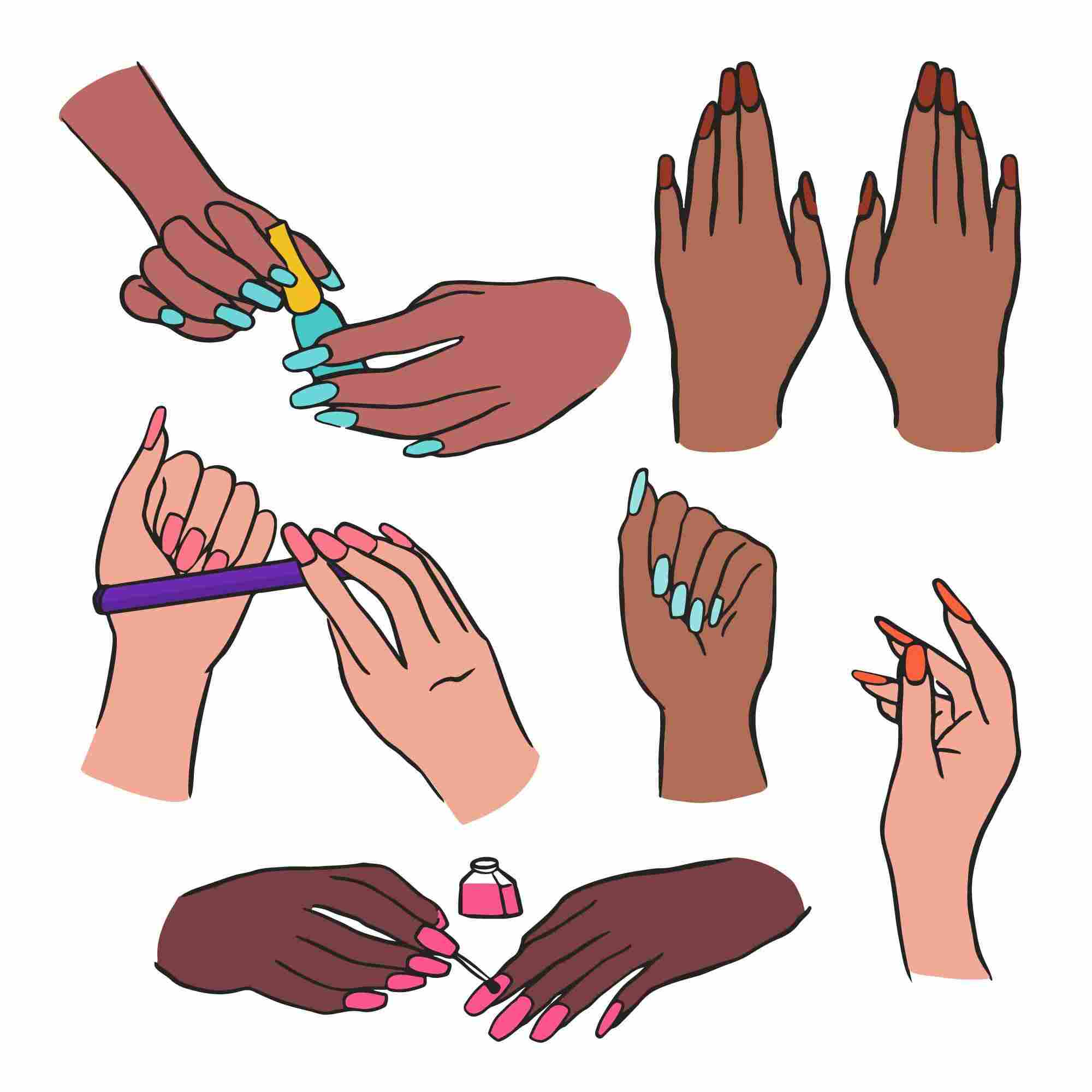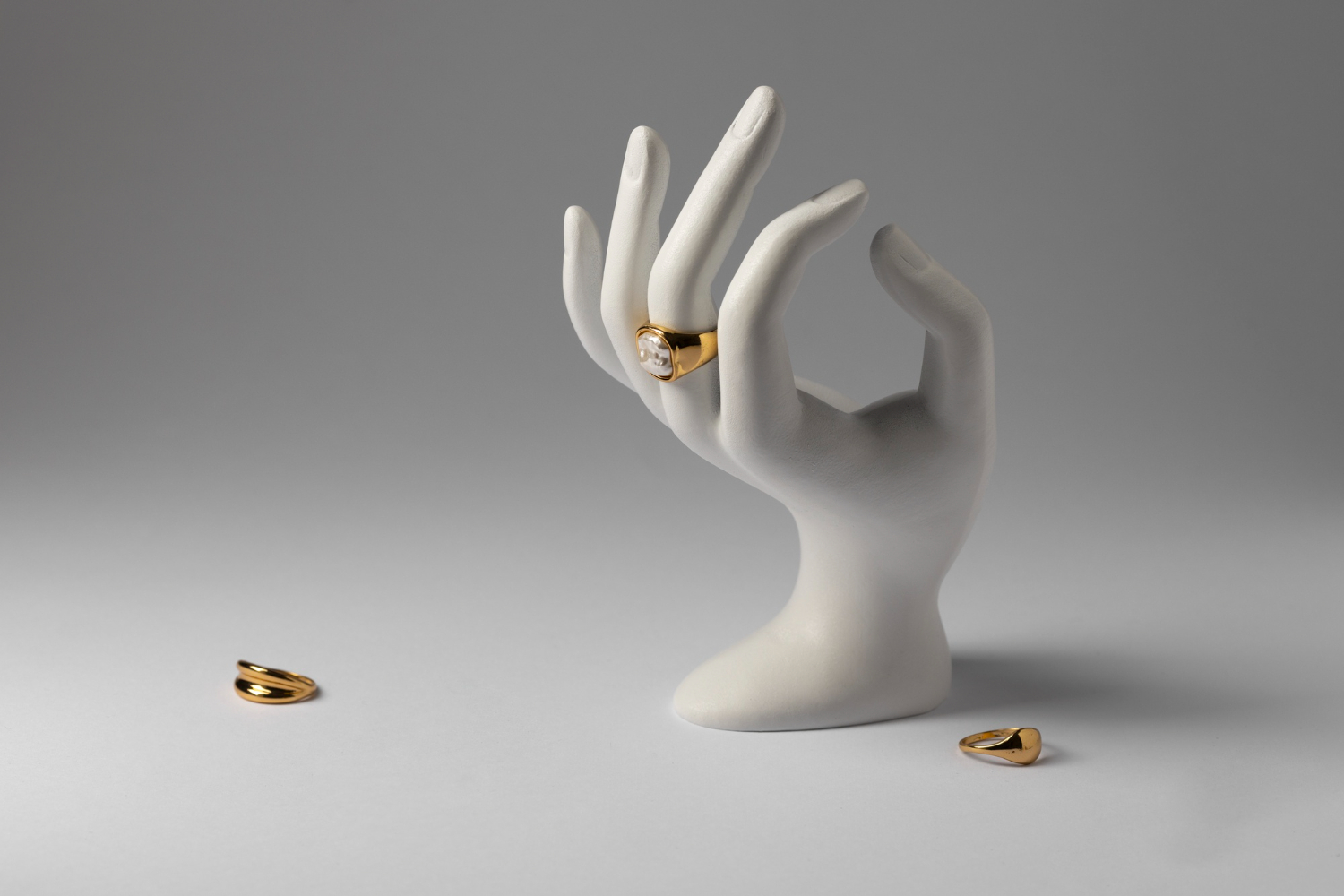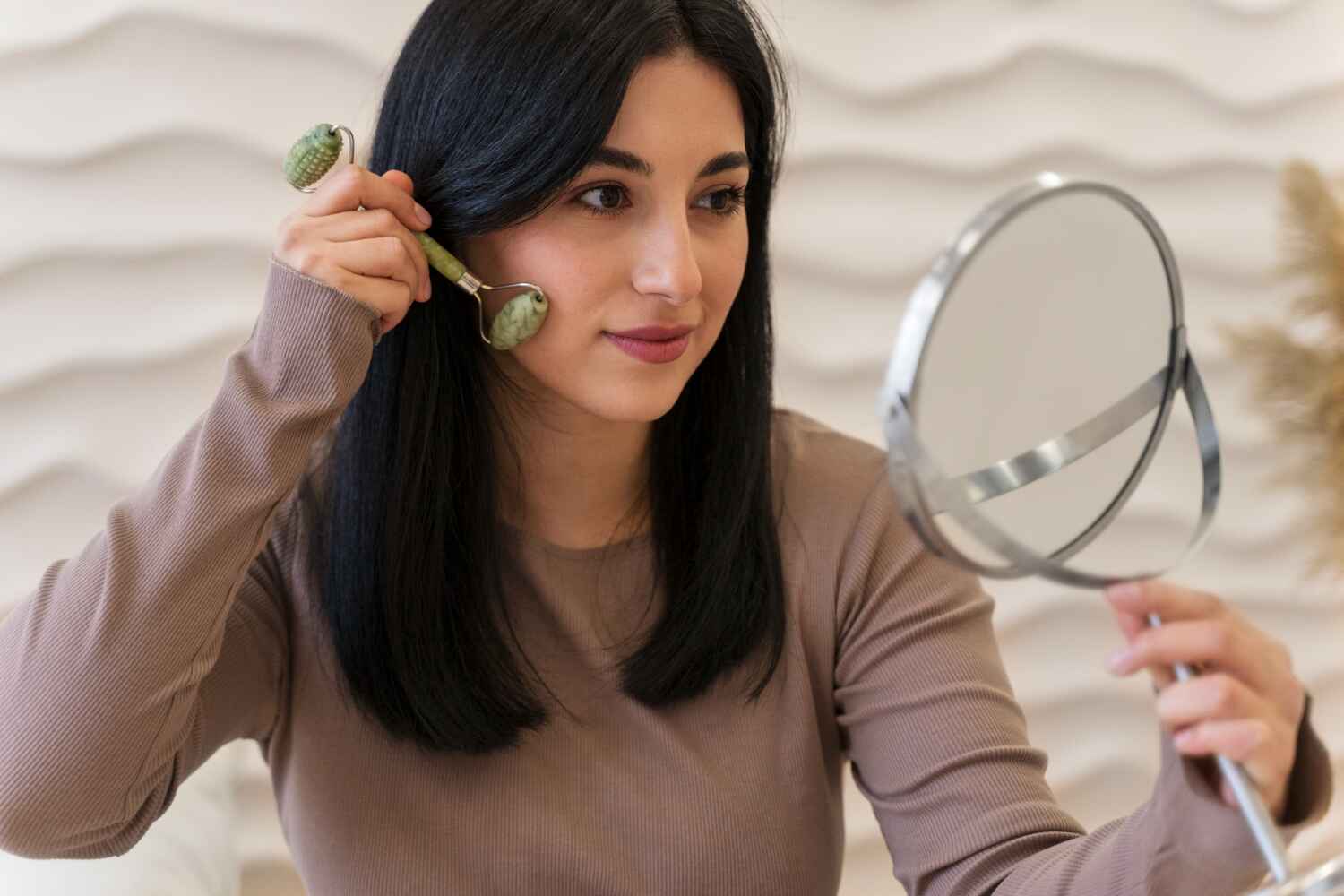Have you ever wondered what grows faster hair or nails? It’s a common curiosity that many of us ponder, especially when we’re trying to grow out a bad haircut or lamenting over chipped nails. Understanding the growth rates of hair and nails isn’t just a trivial fact; it’s a peek into the fascinating workings of our bodies. So, let’s dive into the nitty-gritty of what makes hair and nails grow and see which one comes out on top!
Understanding Hair Growth
Grow faster hair is a complex structure composed mainly of a protein called keratin, which is also found in our skin and nails. Each strand of hair originates from a hair follicle embedded in the skin, and it undergoes a continuous cycle of growth, rest, and shedding.
The Hair Growth Cycle
Hair growth occurs in three distinct phases:
- Anagen Phase: This phase of active growth can last from 2 to 7 years. During this period, cells in the hair bulb divide rapidly, adding to the hair shaft and pushing it upward.
- Catagen Phase: This is a transitional phase lasting about 2 to 3 weeks. Hair growth ceases, and the hair follicle becomes smaller.
- Telogen Phase: This is the resting phase, lasting around 3 months. Eventually, the hair sheds, and the cycle restarts with a new hair beginning to grow.
Factors Influencing Hair Growth
factors can influence how fast your hair grows:
- Genetics: Your genes play a significant role in determining the growth rate and texture of your hair.
- Age:Hair growth typically decreases as individuals age.
- Diet: Nutrient-rich foods can promote healthier and faster hair growth.
- Health Conditions: Conditions like thyroid disorders and hormonal imbalances can affect hair growth.
Understanding grows faster hair or fingernails
Nails, like hair, are made of keratin. They protect the delicate tissues of our fingers and toes and are composed of several parts, including the nail plate, nail bed, cuticle, and matrix.
The Nail Growth Process
fingernails growth begins in the matrix, located under the cuticle. New cells form, harden, and push out older cells, which we see as the nail plate.
Factors Influencing Nail Growth
Just like hair, nail growth can be affected by:
- Genetics: Genetic factors determine nail thickness and growth rate.
- Age: Nails grow more slowly as we age.
- Diet: Adequate nutrition is essential for healthy nail growth.
- Health Conditions: Conditions such as anemia and psoriasis can affect nail growth.
Comparative Analysis: Hair vs. Nails
Growth Rate Comparison
On average, grow nails faster about half an inch (1.25 cm) per month, which amounts to approximately 6 inches (15 cm) per year. Nails, on the other hand, grow at an average rate of 3 millimeters per month, which is about 1/8 inch. This means that nails grow slower than hair.
Factors Affecting Both
Both hair and grow nails fast and strong are influenced by genetics, age, diet, and overall health. However, they also share common external factors such as environmental influences and seasonal changes, where growth can vary with weather and exposure.
Seasonal and Environmental Influences
grows faster hair or fingernails during warmer months due to increased circulation and vitamin D production from sun exposure. Conversely, colder months may see a slowdown in growth.
Scientific Measurements of Growth Rates
Average Growth Rates
- Hair: 1.25 cm per month
- Nails: 3 mm per month
Measurement Techniques
Growth rates can be measured through careful observation and documentation over a period. For hair, this might involve marking a section and measuring its length after a month. For nails, similar tracking with regular photography can show progress.
Biological Mechanisms Behind Growth
Keratin Production
Keratin, the primary protein in hair and nails, is produced by keratinocytes. These cells play a crucial role in the formation and hardening of both structures.
Cellular Processes
Both hair and nails grow through cellular division and keratinization. New cells push out old ones, which then harden and form the visible parts of hair and nails.
How to Enhance Hair Growth
Diet and Nutrition
Consuming a diet rich in vitamins and minerals like biotin, vitamin E, and omega-3 fatty acids can promote hair growth. Foods such as eggs, nuts, and leafy greens are excellent choices.
Hair Care Tips
- Regular Trimming: Helps remove split ends and promote healthier growth.
- Avoid Heat Damage:Reduce the use of heat styling tools.
- Scalp Massage: Enhances blood circulation to the scalp.
How to Enhance Nail Growth
Diet and Nutrition
A balanced diet with adequate protein, biotin, and zinc can support nail health. Foods like fish, whole grains, and avocados are beneficial.
Nail Care Tips
- Regular Moisturizing: Keeps nails hydrated and prevents brittleness.
- Avoid Harsh Chemicals: Minimize exposure to nail polish removers and cleaning agents.
- Protective Gloves: Use gloves when doing chores that involve water or chemicals.
Common Myths and Misconceptions
Hair Myths
- Cutting Hair Frequently Makes It Grow Faster: While trimming can prevent split ends, it doesn’t speed up hair growth.
- Shampooing Daily is Necessary: Overwashing can strip natural oils, leading to dryness.
Nail Myths
- White Spots Indicate Calcium Deficiency: They are usually a result of minor trauma to the nail.
- Nail Biting Makes Nails Grow Faster: It actually damages the nail and the surrounding skin.
Impact of Lifestyle on Growth Rates
Stress and Hormones
High stress levels can lead to hair loss and brittle nails due to hormonal imbalances. Practices like meditation and regular exercise can mitigate these effects.
Physical Activity
Regular physical activity enhances blood circulation, which can positively affect the growth of both hair and nails.
Role of Supplements in Growth
Hair Supplements
Supplements containing biotin, folic acid, and collagen can support hair growth.
It’s important to always seek advice from a healthcare provider before beginning any new supplement regimen.
Nail Supplements
Biotin, vitamin E, and iron supplements can promote stronger and faster-growing nails.
Impact of Medical Treatments
Hair Treatments
Treatments like minoxidil and finasteride can stimulate hair growth, especially in cases of pattern baldness.
Nail Treatments
Topical treatments and supplements can help improve nail health, particularly in conditions like fungal infections or psoriasis.
Genetic and Hormonal Influences
Hereditary Factors
Genetics significantly influence the growth patterns of hair and nails. If your parents had thick, fast-growing hair and nails, chances are you will too.
Hormonal Changes
Hormonal fluctuations, especially during puberty, pregnancy, and menopause, can significantly affect the growth rates of hair and nails.
Preventing Damage for Better Growth
Protecting Hair
Avoid Tight Hairstyles
Avoiding tight hairstyles is important for maintaining the health of your hair and scalp. Tight hairstyles, such as ponytails, braids, or buns pulled tightly, can cause significant stress on your hair follicles, leading to breakage and even hair loss, a condition known as traction alopecia.
Additionally, these styles can cause headaches and scalp irritation. To protect your hair, opt for looser styles that don’t pull on your roots, and use hair ties that are gentle, such as fabric-covered elastics. Give your hair regular breaks from any kind of tension by wearing it down or in loose, comfortable styles. By being mindful of how you style your hair, you can prevent damage and promote healthier, stronger hair.
Use Gentle Hair Products
Using gentle hair products is crucial for maintaining healthy, vibrant hair. Harsh shampoos, conditioners, and styling products can strip your hair of its natural oils, leading to dryness, frizz, and breakage. To protect your hair, choose products that are free from sulfates, parabens, and other harsh chemicals.
Look for shampoos and conditioners that contain natural ingredients like aloe vera, coconut oil, and shea butter, which provide nourishment and hydration. Additionally, be mindful of the frequency of washing your hair, as overwashing can also lead to dryness. By opting for gentle, nourishing products, you can keep your hair strong, shiny, and resilient.
Protecting Nails
Avoid Using Nails as Tools
Avoid using your nails as tools to maintain their health and prevent damage. Using your nails to open cans, scrape off labels, or perform other tasks can cause them to chip, break, or split. This not only affects the appearance of your nails but also can lead to painful injuries or infections. Instead, use appropriate tools like scissors, tweezers, or knives for such tasks. By treating your nails with care and not subjecting them to undue stress, you can keep them strong, smooth, and looking their best.
Keep Nails Clean and Dry
Keeping your nails clean and dry is essential for maintaining their health and preventing infections. Moist environments can promote the growth of bacteria and fungi, leading to conditions such as nail fungus or bacterial infections. To keep your nails clean, regularly wash your hands and scrub gently under your nails with a nail brush.
After washing, make sure to dry your hands and nails thoroughly with a clean towel. Avoid prolonged exposure to water by wearing gloves when doing household chores, such as washing dishes or cleaning. By maintaining good hygiene and keeping your nails dry, you can prevent infections and keep your nails healthy and strong.
Conclusion
The grand battle of growth rates, hair generally takes the lead over nails. While hair grows about half an inch per month, nails lag slightly behind at about 3 millimeters per month. However, both hair and nails share similarities in their growth processes, and various factors can influence their speed. By understanding these factors and adopting healthy practices, you can support better growth for both.
Read more : How to Pink Pursuit Sally Hansen to Essie Peak Show
FAQs
Does hair grow faster than nails?
Yes, hair generally grows faster than nails. Hair grows about half an inch per month, while nails grow approximately 3 millimeters per month.
Can diet affect the growth rates of hair and nails?
Absolutely! A diet rich in vitamins and minerals can promote healthier and faster growth for both hair and nails.
Do hair and nails grow faster in the summer?
Yes, due to increased circulation and vitamin D production from sun exposure, both hair and nails tend to grow faster in warmer months.
Is it true that cutting hair frequently makes it grow faster?
No, while regular trimming can prevent split ends, it doesn’t actually speed up the growth rate of hair.
What supplements can help with hair and nail growth?
Supplements containing biotin, vitamin E, and omega-3 fatty acids can support the growth of both hair and nails, but it’s always best to consult with a healthcare provider before starting any new supplements.



